Midwest Packaging Solutions represents innovative and advanced shrink equipment options from top-quality manufacturers that promote productivity and packaging sustainability. Shrink wrapping is an industry-standard solution utilized for visual appealing product branding, shelf life extension and protection, as well as providing product storage convenience. Midwest offers a wide variety of shrink wrapping machines to meet your needs, including semi-automatic, fully-automatic, side seal, in-line L-bar sealers, lap sealers, combo units and shrink tunnels.
L-Seal Wrappers
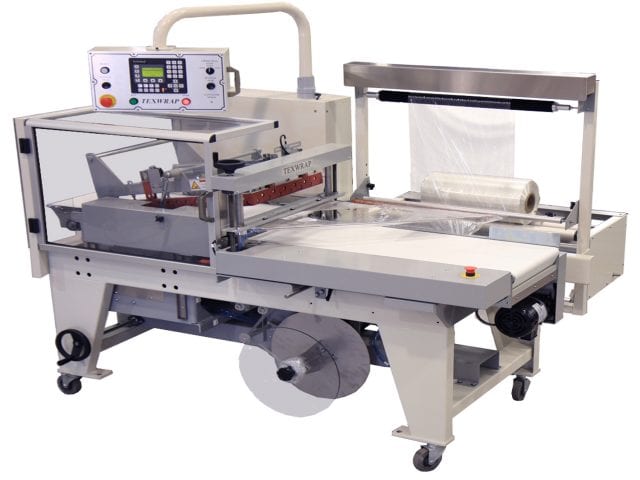
L-sealers are named for the L-shaped seal configuration which simultaneously makes the end and side seal of one package as well as the front seal of the trailing package. Generally chosen for applications where speeds are slow to moderate or where space is limited, these sealers can be affordable and versatile wrappers within a certain range of product sizes. Available in different seal sizes, the most common limiting factor with L-sealers is product length.
Side Seal Systems
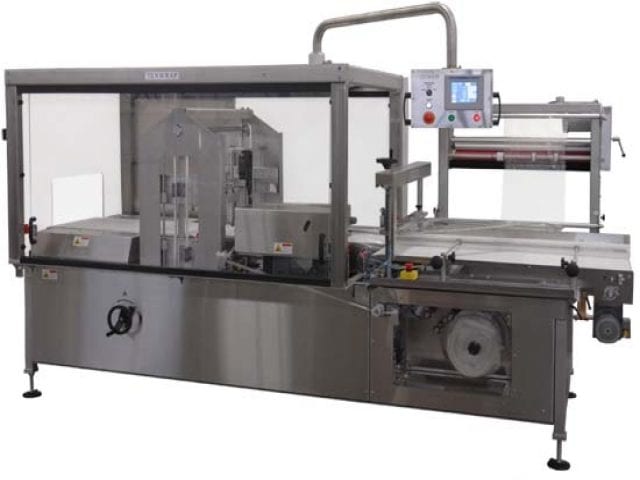
Side sealers are generally considered the most flexible of the various wrapper styles and are often chosen by contract packagers who have the need to wrap a never-ending variety of packages. These wrappers encapsulate products in a continuous tube of film, sealing along one side of the package and then separating them into individual units downstream using a cross seal. Unlike L-bar sealers, side seal machines can run random products of infinite length.
Two-belt and three-belt side seal wrappers
Side seal wrappers come in two basic configurations: two-belt and three-belt. Two-belt sealers are made more compact by eliminating one of the infeed belts and making the end seal prior to the side seal. Not much longer than an L-sealer, two-belt units are often the logical choice when customers find themselves needing the ability to wrap longer products without greatly expanding the length of production lines. Three-belt side sealers have the added advantage of being able to precisely space the products prior to entering the wrapping area.
Texwrap Versa Seal side seal
Texwrap side seal wrappers use Texwrap’s exclusive TVS side seal to insure consistent, high quality seals across a wide range of film types and gauges. The TVS is a very simple device yet offers outstanding control of the three elements necessary for a good seal: pressure, temperature and time. The TVS requires no air and has very few moving parts for ease of operation and minimal maintenance.
Vertical Wrapping Systems
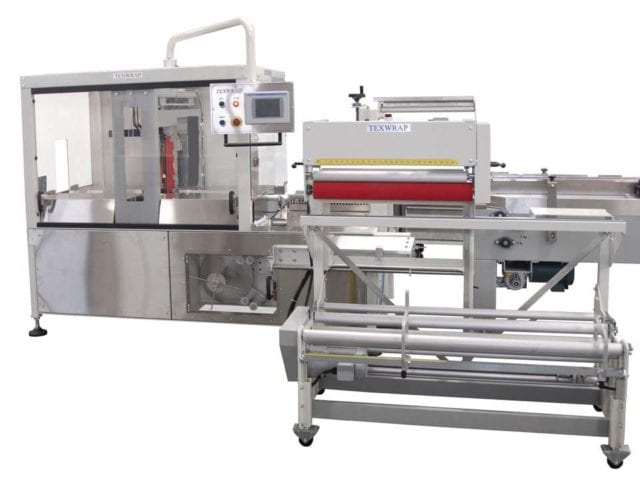
In addition to horizontal wrappers, Texwrap also makes vertical continuous motion sealers. We took our technology from the horizontal wrappers and applied it to wrap products in the upright position. Vertical wrappers are used to wrap multipacks of products such as bottles, cans, jars, or canisters directly from a filler.
Once found only in club stores, multipacks have quickly grown in populartiy as marketers have found them a great way to offer special pricing promotions or to package different forms of the same item in variety packs. With this growth, packagers needed a way to shrink wrap these packs without the labor and expense of laying them down prior to wrapping on conventional shrink systems. Even then, the only practical way to hold the items together to keep them from rolling while being wrapped is to use a chipboard carrier or “boot” . These not only add expense but also packaging material in an age where the pressure is to reduce wherever possible.
Texwrap vertical wrappers eliminate these problems while making a very secure and attractive package for store display. Texwrap systems do not require a carrier to hold products in place while wrapping. In applications where the boot was also used to hide bar codes, the packager can now use printed film or a label to hide the bar codes and identify the new unit as a multipack. The servo controls on the 514 and 914OVS give precise product and film control which allows high speed wrapping with precise print registration. To create the most attractive and secure package, Texwrap does not use a bottom lap seal which can fail or an unsightly side seam on the face of the package. Instead, we use our exclusive Versa Seal system to create a full, secure bottom trim seal.
In order to make this system even more effective, Texwrap also offers a label positioning system as an option. Using servo-driven gripper wheels, the orienting head spins each item to a predetermined position so that the labels are precisely aligned. This makes a very attractive and functional multipack. The system is even flexible enough to handle multiple UPC codes in a variety pack.
Texwrap vertical systems are capable of wrapping up to 90 3-packs/minute while using Texwrap technology to wrap with the least amount of film possible.
Lap Seal Systems
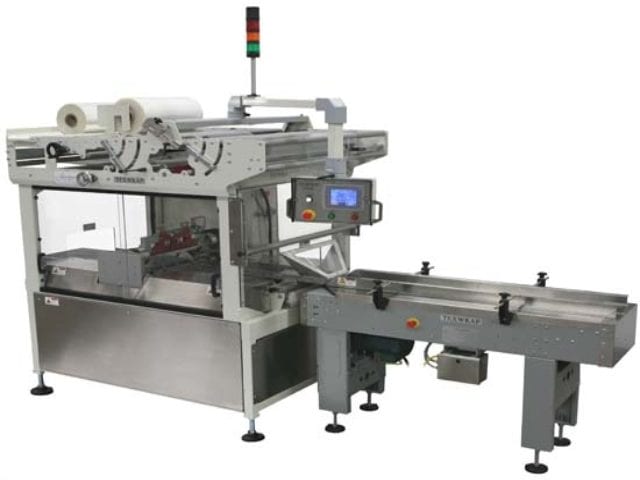
Lap seal wrappers place a nearly invisible overlap seal under the package making a very attractive package while using the minimum width film. Lap sealers use flat or singlewound film which is pulled over a forming plow, overlapped under the package and sealed by use of either a static or thermal seal. As the products flow through the former, they are encapsulated in a continuous tube of film and cut apart downstream by the end seal device. Lap sealers are most popular in applications which call for long runs of constant-sized products because each product requires an individually-sized plow and a specific width of film to be stocked.
Shrink Tunnels
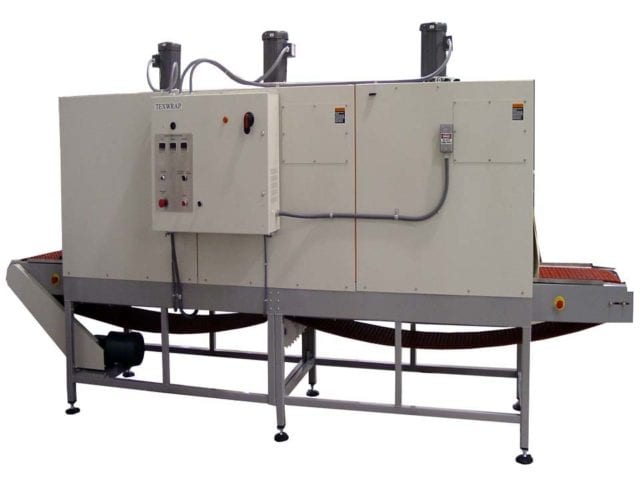
Often overlooked, the design of a shrink tunnel often plays as large a role as the wrapper itself in the quality and appearance of the final package. Texwrap tunnels have proven over many years of use to deliver superior shrink results. Unless a tunnel can impart sufficient energy into the film early enough to create the maximum ballooning effect and allow the bubble to collapse at just the right rate, the film won’t shrink to its maximum extent, imperfections won’t be cleaned up and the end result will be less than desirable. The heater size, fan velocity, volume of air, control of the direction of the air, belt type, and tunnel length are all critical factors in the choice of a tunnel.

